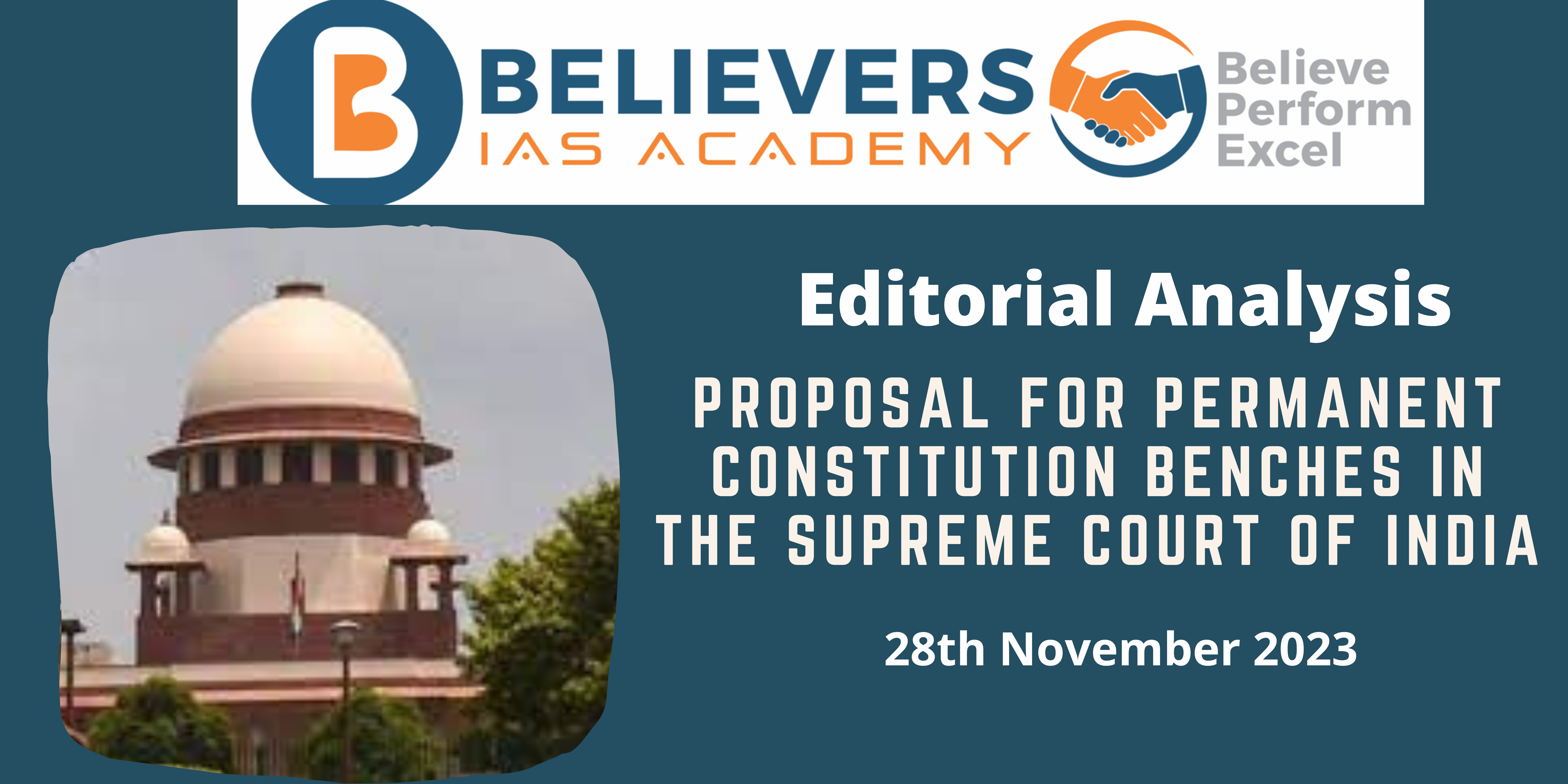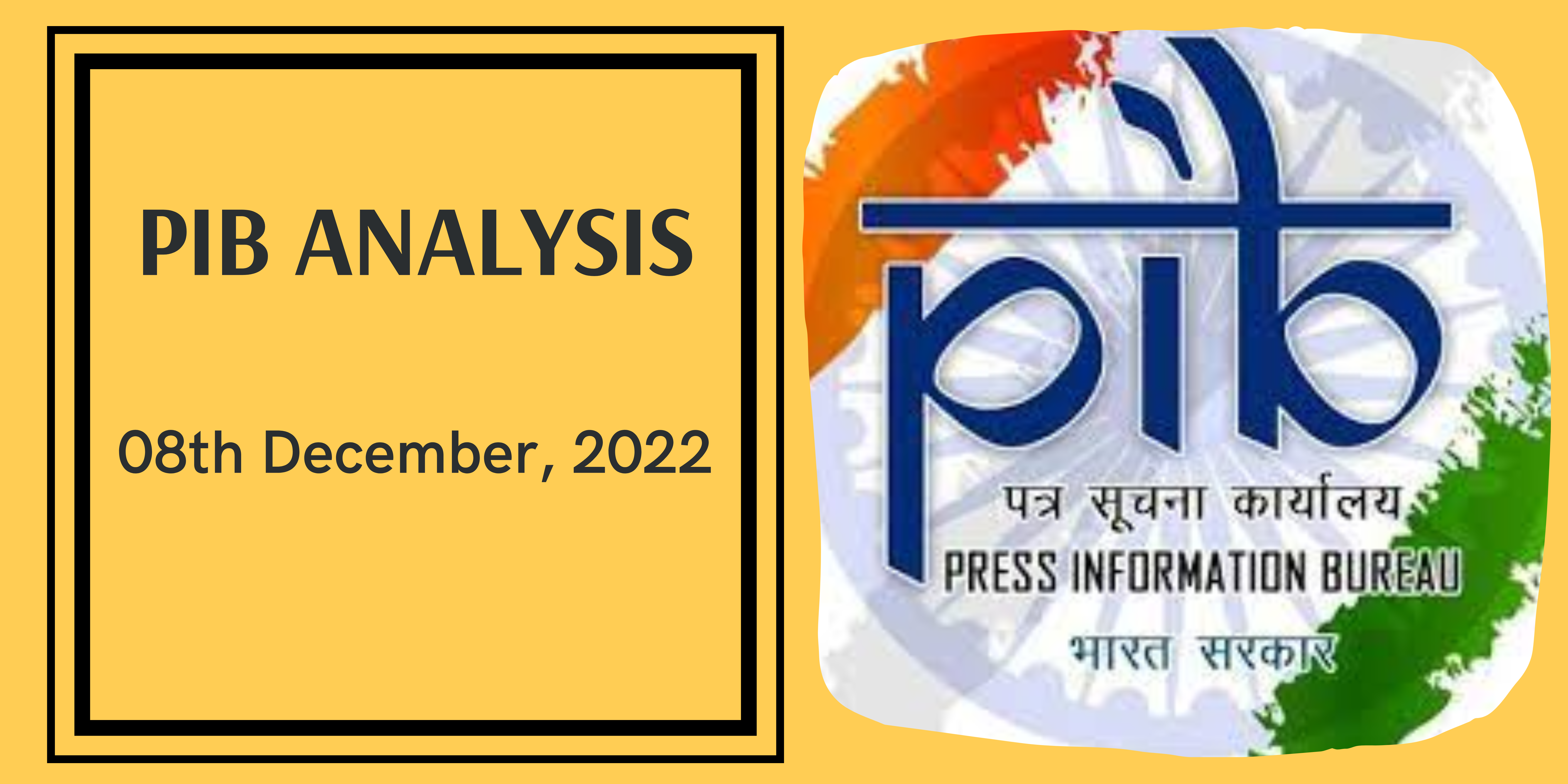Proposal for Permanent Constitution Benches in the Supreme Court of India
Context:
The Supreme Court of India, operating within the domains of original, appellate, and advisory jurisdictions, is contemplating structural reforms. This includes the establishment of Constitution Benches as a constant feature, aiming to address the burgeoning backlog and enhance accessibility.
- The Court, under Chief Justice D.Y. Chandrachud, is considering the division of the Supreme Court into two parts: a Final Court of Appeal and a permanent Constitution Bench.
- This potential restructuring has sparked discussions on the Court’s workload, accessibility, and the need for specialized benches.
Relevance:
GS-02 (Judiciary)
Prelims:
Supreme Court
Mains Question:
Evaluate the proposal to establish Constitution Benches as a permanent feature in the Supreme Court of India. Discuss the implications, challenges, and potential benefits of this structural change, considering its impact on workload distribution and access to justice. (250 words, 15 marks)
Constitutional Bench of the Supreme Court:
Definition: A Constitutional Bench in the Supreme Court comprises five or more judges and is not a regular occurrence.
Circumstances for Formation:
- Article 145(3): Mandates a minimum of five judges for cases involving substantial constitutional questions.
- Article 143: Triggered when the President seeks the Supreme Court’s opinion on matters crucial for public welfare.
Instances of Formation:
- Conflicting Judgments: Arise when multiple three-judge benches provide contradictory rulings on the same legal issue.
- Ad Hoc Nature: Constitution Benches are assembled on a need basis for specific cases under the current system.
Need for a Permanent Constitutional Bench:
- Efficiency: A permanent bench aims to expedite urgent cases, reducing delays in hearings.
- Pendency Crisis: Despite increased judicial strength, the Supreme Court faces a backlog exceeding 71,000 cases, highlighting the urgency for a more streamlined process.
Dimensions of the Article:
- Understanding the Proposal
- Historical Context and Demands for Change
- Challenges and Controversies
- Historical Evolution and Structural Proposals
Understanding the Proposal:
- The proposal suggests making Constitution Benches a regular feature within the Supreme Court. Currently, these benches, comprising five, seven, or nine judges, are convened for specific constitutional law issues.
- The intent is to enhance accessibility, address the massive backlog, and streamline the decision-making process.
- Chief Justice D.Y. Chandrachud is championing this reform to ensure a more organized and efficient judicial system.
Historical Context and Demands for Change:
- The rise in the number of judges over the years due to increasing workload and case backlog has been the scene so far.
- With 79,813 pending cases before 34 judges, demands for structural changes have been persistent.
- The 1984 proposal by the Tenth Law Commission and subsequent recommendations emphasized the need to divide the Supreme Court into Constitutional and Legal Divisions to streamline justice delivery.
Challenges and Controversies:
- The challenges associated with the proposed restructuring are explored, including the historical context, demands for change, and the Tenth Law Commission’s 1984 proposal to split the Supreme Court into two divisions.
- The Eleventh Law Commission echoed the idea in 1988, emphasizing increased accessibility and reduced litigant fees. The 229th Law Commission Report in 2009 suggested regional benches to hear non-constitutional cases, aiming to alleviate the backlog.
- Presently, the Supreme Court faces a colossal backlog, resulting in prolonged legal proceedings and limited accessibility. Chief Justice D.Y. Chandrachud’s initiative to make Constitution Benches a regular fixture to address these issues.
Historical Evolution and Structural Proposals:
- Tracing the historical evolution of the Supreme Court, the article highlights its establishment in 1950 and subsequent increases in the number of judges due to rising workload. The 1935 Government of India Act and the 1949 Constitution paved the way for the Supreme Court’s formation, aligning with India’s transition to an independent, democratic republic. The proposal to create regional benches, outlined in the 229th Law Commission Report, is revisited as a structural solution.
Way Forward:
- The proposal to establish Constitution Benches as a regular feature in the Supreme Court represents a critical juncture in judicial reform. Chief Justice D.Y. Chandrachud’s initiative, backed by historical context and previous recommendations, holds the potential to streamline justice delivery, reduce backlog, and enhance accessibility. However, addressing associated challenges, such as regulatory uncertainties and legal framework adjustments, is crucial.




